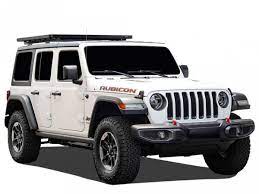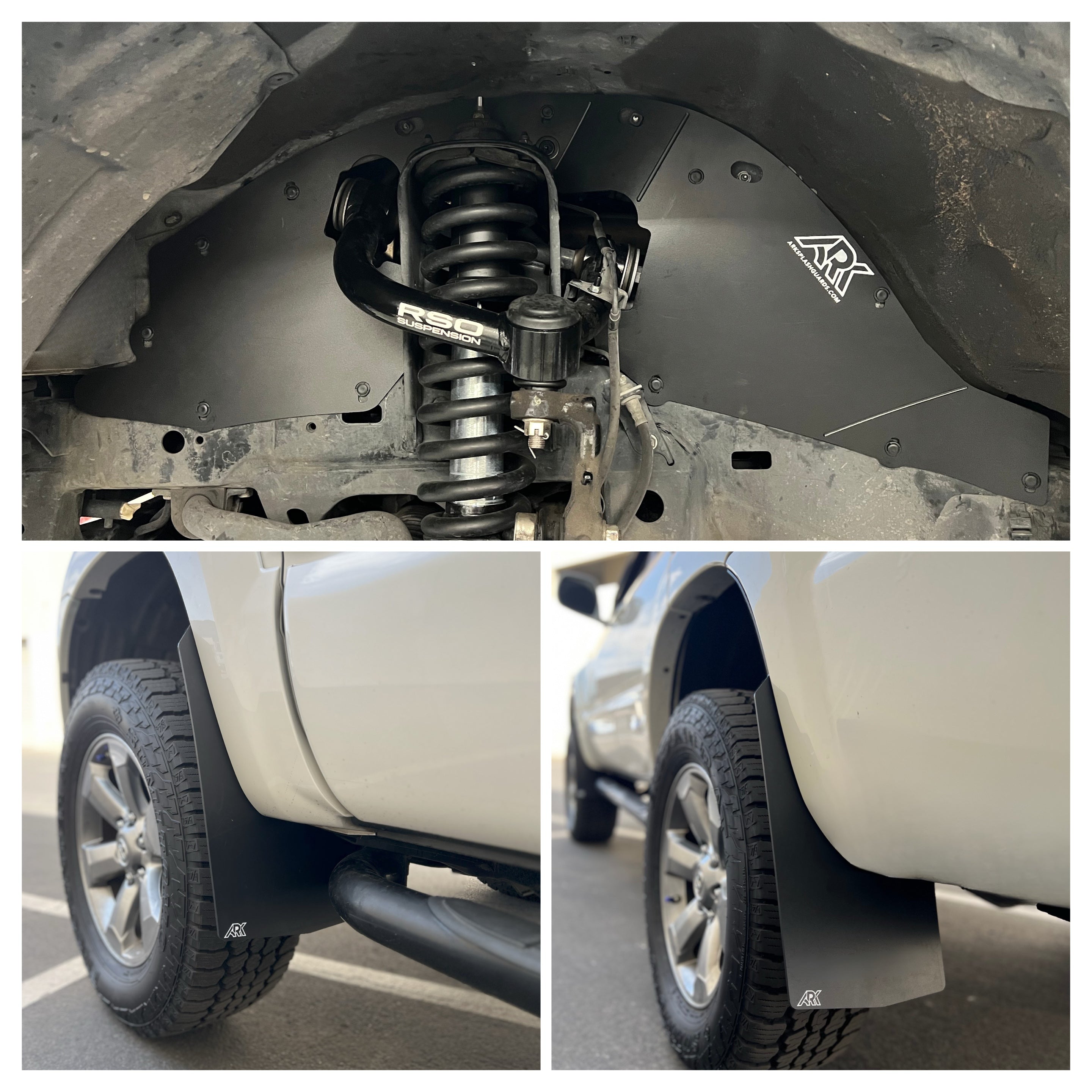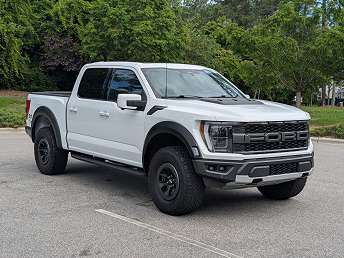The Best Jeep Mud Flaps for Off-Roading: Trail-Tested Picks from Enthusiasts

If you spend your weekends chasing trailheads and your weekdays commuting, you already know the humble value of Jeep mud flaps. They’re the unsung armor that keeps rocks from sandblasting your paint, mud from coating your door handles, and debris from pelting the rig behind you. In the off-road world, a mud flap (also called a splash guard) is more than a courtesy—it’s a practical, trail-proven accessory that protects your investment and keeps your Jeep ready for the next adventure.
Why Mud Flaps Matter Off-Road (and On)
Off-roaders often obsess over skid plates, bumpers, and recovery gear, but mud flaps rarely get equal attention. That’s a mistake. Properly sized splash guards do three important jobs:
-
Protect your Jeep’s finish and components. They reduce rock chips on rocker panels, fender liners, rear shocks, and trailing arms.
-
Cut down on mess and corrosion. Less mud and slush means easier cleanup and less trapped moisture in seams where rust likes to start.
-
Improve trail manners and compliance. Many trail organizations and municipalities require adequate tire coverage for group runs or road travel between trail sections.
When you upgrade to larger tires or add wheel spacers, the tire tread throws more debris. That’s exactly when a good set of flaps earns its keep.
What to Look For in Trail-Ready Mud Flaps
Before we jump into our enthusiast “picks,” here are the criteria experienced wheelers use to separate great flaps from gimmicks:
-
Material & Flexibility
-
Heavy-duty rubber: Classic, durable, great at absorbing impact, but can get floppy at highway speeds if too thin.
-
Polyurethane/polymer blends: Excellent memory and tear resistance; holds its shape better at speed yet flexes when it should.
-
HDPE/UHMW: Slick and abrasion-resistant; often used in high-impact applications. Stiffer options need smart mounting to avoid cracking.
-
Coverage & Proportions
-
For 33–35" tires, look for 10–12" width at minimum; bigger meats (37"+) may want 12–14".
-
Length should reach below the axle centerline when possible for maximum spray control, without turning into a trail anchor.
-
Mounting System
-
No-drill, bolt-on brackets make installation easier and preserve factory sheet metal.
-
Quick-release hardware lets you pop flaps off for a gnarly obstacle, then reattach for road miles or muddy connectors.
-
Hardware & Finish
-
Stainless steel or zinc-coated hardware fights corrosion.
-
Backing plates and reinforcement where the flap meets the bracket prevent tearing over rough terrain.
-
Model-Specific Fitment
-
JL vs. JK vs. JT Gladiator all have different fender and liner geometries. Precision-fit solutions look cleaner and resist rattles.
Trail-Tested Picks by Use Case
Below are enthusiast-style recommendations organized by how (and where) you drive. We’re focusing on characteristics that matter in the dirt—flex, bracket strength, coverage, and serviceability—so you can match the right splash guard to your Jeep and your terrain.
Best Overall for Daily-Driven Jeep That Still Wheels on Weekends
Heavy-Duty Poly Blend, Quick-Release Ready
For Jeepers who split time between pavement and forest roads, a mid-weight polyurethane blend hits the sweet spot: it resists tearing on the trail, keeps its shape at 70 mph, and flexes when a rock kicks up. Pair that with a no-drill, bolt-on bracket and quick-release pins, and you’ve got a system you can adapt in seconds—off for a tight rock garden, back on for the drive home or a muddy approach road.
Why enthusiasts love it:
-
Balanced stiffness/flex for daily driving and trails
-
Easy to maintain alignment and symmetry
-
The quick-release option encourages you to actually use the flaps, not leave them on the garage wall
Best for Rock Crawling and Technical Trails
Compact, High-Clearance Panels with Reinforced Mounts
On trails with breakover ledges and off-camber squeezes, long flaps can snag. A trimmed, compact flap with reinforced mounting points keeps coverage where you need it (rear lower quarter and behind the tires) without dragging. Choose a polymer that rebounds after a bend and use backing plates at the bracket to protect against tears from tire rub or trail contact.
Pro tip: Add a secondary tether (short strap or cable) to prevent a flap from flipping over the tire at speed or after a big hit. It’s a simple mod that extends flap life.
Best for Mud, Snow, and Sloppy Forest Roads
Extra-Wide, Lower-Reaching Flaps with Cold-Weather Flex
If your Jeep lives in muddy washes, snow-packed switchbacks, or slushy winter commutes, go wider and a touch longer. Seek compounds that stay flexible in the cold and prioritize splash control over ultimate clearance. This setup dramatically reduces rear spray—your trailer, bikes, and tailgate will thank you.
Nice-to-have features: integrated anti-sail tabs or a stiffer upper section to minimize highway flap flutter, which can reduce coverage just when you need it most.
Best Budget-Friendly Option
Universal, Trim-to-Fit with Solid Hardware
Universal flaps are cost-effective and, with careful trimming, can look slick. The keys to doing it right:
-
Use a template (cardboard first) to mirror left/right cuts.
-
Invest in quality hardware—stainless bolts, washers, and backing plates.
-
De-burr edges after trimming to prevent splits.
Budget doesn’t have to mean flimsy. Focus on material thickness (3–4 mm for rubber or polymer is a good baseline) and reinforcement at the mounting line.
Best for Overlanding and Towing (JT Gladiator Owners, Look Here)
Full-Coverage Rears with Trailer Courtesy
Gladiator owners who tow campers, boats, or utility trailers should prioritize rear coverage to keep gravel from peppering the trailer front. Choose extra-wide rears with secure, multi-point brackets. A quick-release option is still handy, but most touring rigs leave flaps on full-time for road sections between trail segments.
Look for: corrosion-resistant hardware, and if you hit salted winter roads, consider a polymer blend that won’t absorb moisture like some rubbers can.
Best No-Drill, Clean-Fit Solution for JL/JK
Vehicle-Specific Kits with Hidden Brackets
Wrangler owners who value a clean, OEM-plus aesthetic will appreciate no-drill kits with brackets that tuck behind factory liners or use existing holes. The result: tight tolerances, minimal rattle, and an installation that looks like it shipped from the factory—just with better materials.
Installer’s note: test-fit before final torque and use medium-strength thread locker so trail vibration doesn’t loosen your setup.
Sizing and Fitment: Getting It Right the First Time
Even the best flap underperforms if it’s too small, too long, or angled incorrectly. Use this quick fit guide:
-
Width: Match tire tread width and offset. For 12.50-wide tires on most offsets, 12-inch-wide flaps are a strong starting point. Wide-offset wheels often need +1–2 inches of flap width.
-
Length: Aim to cover at least to the axle centerline when the Jeep sits at ride height. For deep mud and snow, going 1–2 inches below that line improves spray control.
-
Angle: Mount the flap plumb (vertical) when the Jeep is on level ground. An angled flap can funnel debris toward sensitive components.
-
Clearance: Cycle the suspension (or use ramps) and check full lock-to-lock steering to verify no rubbing. Trim conservatively if needed.
Installation Essentials: Tools, Tips, and Tricks
A tidy install lasts longer and looks better:
-
Tools: step bit, quality drill (if required), torque wrench, panel clip pliers, deburring tool, painter’s tape, and a straightedge.
-
Marking: mock up with painter’s tape; measure twice to keep both sides even.
-
Fasteners: use stainless hardware and large-diameter washers or backing plates.
-
Protection: a thin rubber isolator between the bracket and paint can prevent scuffing and corrosion.
-
Aftercare: re-torque after the first trail day; materials settle and hardware seats under vibration.
Maintenance: Keep Them Performing Season After Season
Mud flaps are low-maintenance, but not no-maintenance:
-
Rinse after muddy runs to prevent caked debris from hardening and adding weight.
-
Inspect mounts every oil change; tighten any fasteners that have loosened.
-
Check edges for splitting—rounding corners after a trim can reduce stress risers.
-
Seasonal swap: some drivers keep a longer “winter/mud” set and a shorter “summer/rock” set if they’re running quick-release mounts.
Common Mistakes to Avoid
-
Going too stiff. A metal or overly rigid plastic panel might look sharp, but it can bend brackets or crack on impact. Flex saves parts.
-
Too short for conditions. If you’re throwing a rooster tail on the highway, add length.
-
Ignoring hardware. Great material with weak screws is a failure waiting to happen.
-
Skipping test fits. Cycle suspension and steering before drilling a single hole.
A Word on Compliance and Trail Etiquette
Regulations vary by state and by land manager, but the spirit is similar: cover your tread to keep roads and fellow travelers safe. On group runs, adequate coverage is often a condition of participation. Even when it’s not mandatory, a good set of splash guards shows respect for the rigs behind you and the trails we all share.
Why Enthusiasts Gravitate to American-Made, Purpose-Built Splash Guards
Durable mud flaps aren’t just about materials—it’s also about design choices that reflect real trail experience:
-
Bracket geometry that avoids common contact points on JL/JK/JT fenders
-
Corrosion-resistant hardware that stands up to winter brine and desert monsoon season
-
Quick-release options because the best flap is the one you actually use
-
Model-specific fit to prevent rattles and misalignment
When those elements come from a team that lives on the trail, you can feel it in the results: fewer compromises, more confidence, and gear that’s easier to trust.
How ARK Splash Guards Fits into the Picture
When you’re choosing Jeep mud flaps, where they’re designed and who designs them matters. ARK Splash Guards is a small, American-made, family-owned business based in Phoenix, Arizona. Our team isn’t just building parts—we’re passionate off-road and outdoor enthusiasts who have been exploring the Arizona wilderness since childhood. That background shows up in practical details: robust bracketry, thoughtful coverage, and materials selected for heat, rock, and monsoon season alike.
Because ARK’s home turf includes everything from granite-studded desert climbs to muddy high-country forest roads, our solutions reflect real-world abuse and the need for versatility: bolt-on ease, quick-release convenience, and sizes that make sense for common tire upgrades.
Matching ARK Options to Your Use Case
-
Daily driver/weekend warrior: Choose a polymer blend flap with a no-drill bracket and optional quick-release pins—ideal for swapping between commute and trail mode.
-
Rock crawler: Opt for a reinforced, shorter-length rear flap with backing plates to prevent tears when you’re squeezing through boulders.
-
Mud & snow adventurer: Go wider and slightly longer, prioritizing cold-weather flexibility and anti-sail stability for highway stretches between trail systems.
-
Gladiator overlander/tower: Consider full-coverage rear flaps with multi-point mounts to protect trailers, bikes, and camp gear from gravel rash.
If you’re unsure where to start, our team can point you to the right splash guard width and length for your wheel/tire combo and intended terrain—exactly the kind of advice you get from folks who spend their weekends on the same trails you do.
Final Checklist Before You Hit “Add to Cart”
-
Confirm your Jeep generation (JK, JL) or JT Gladiator, plus trim and fender style
-
Measure tire width and offset; select flap width accordingly
-
Decide on quick-release vs. fixed mount
-
Choose material tuned to your climate and terrain
-
Verify stainless or zinc-coated hardware is included
-
Plan your install: tools ready, test-fit time booked, medium-strength thread locker on hand
Ready to Upgrade Your Jeep’s Trail Manners?
Protect your rig, your trailer, and the drivers behind you with mud flaps built by people who actually wheel. ARK Splash Guards is American-made, family-owned, and proudly based in Phoenix, Arizona—a team of lifelong off-road enthusiasts who grew up exploring the state’s deserts, canyons, and pine forests. If you want durable, well-engineered Jeep mud flaps that look clean, install easily, and perform on real trails, check out ARK Splash Guards today. Your paint, your passengers, and your favorite trails will thank you.




